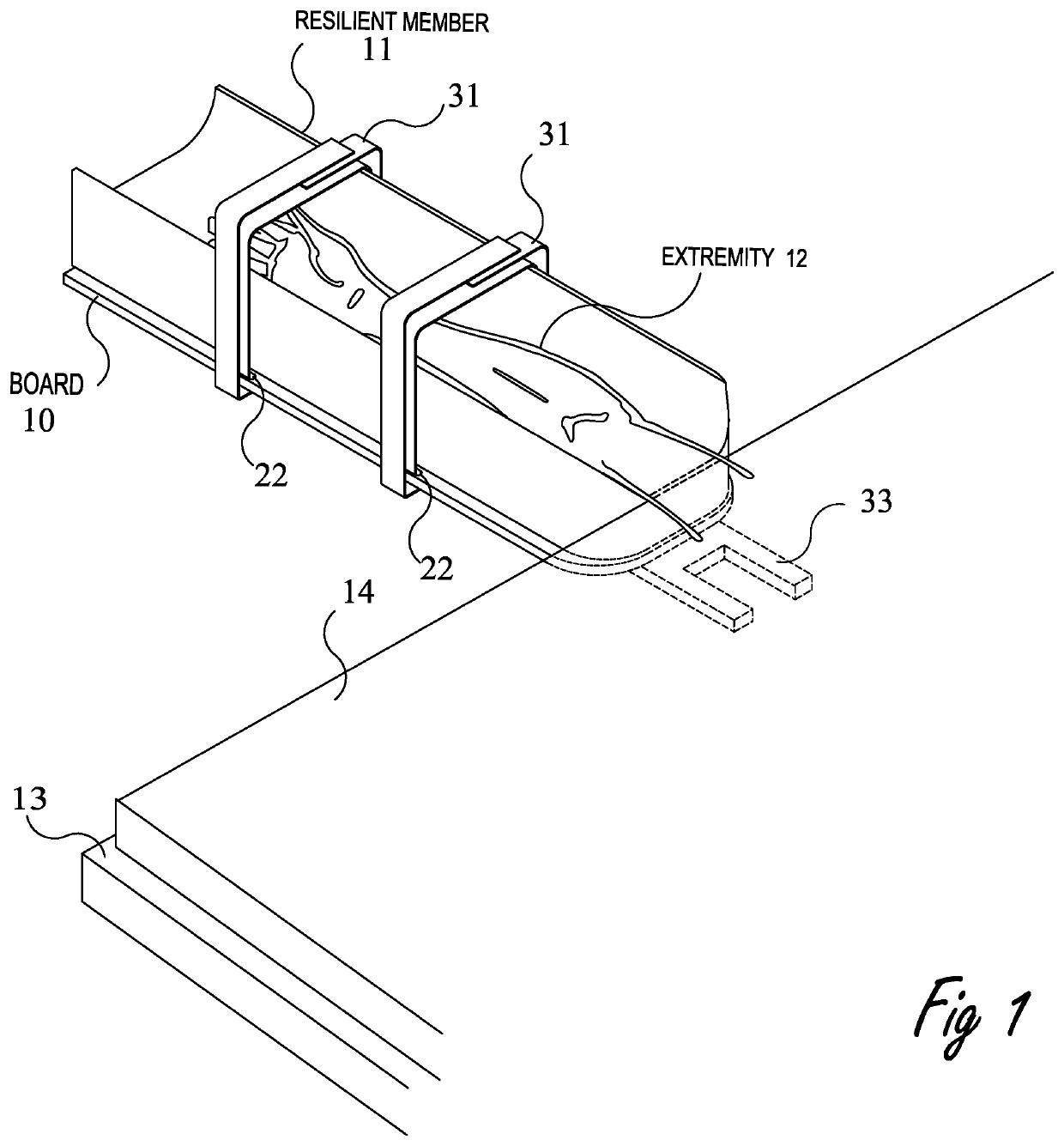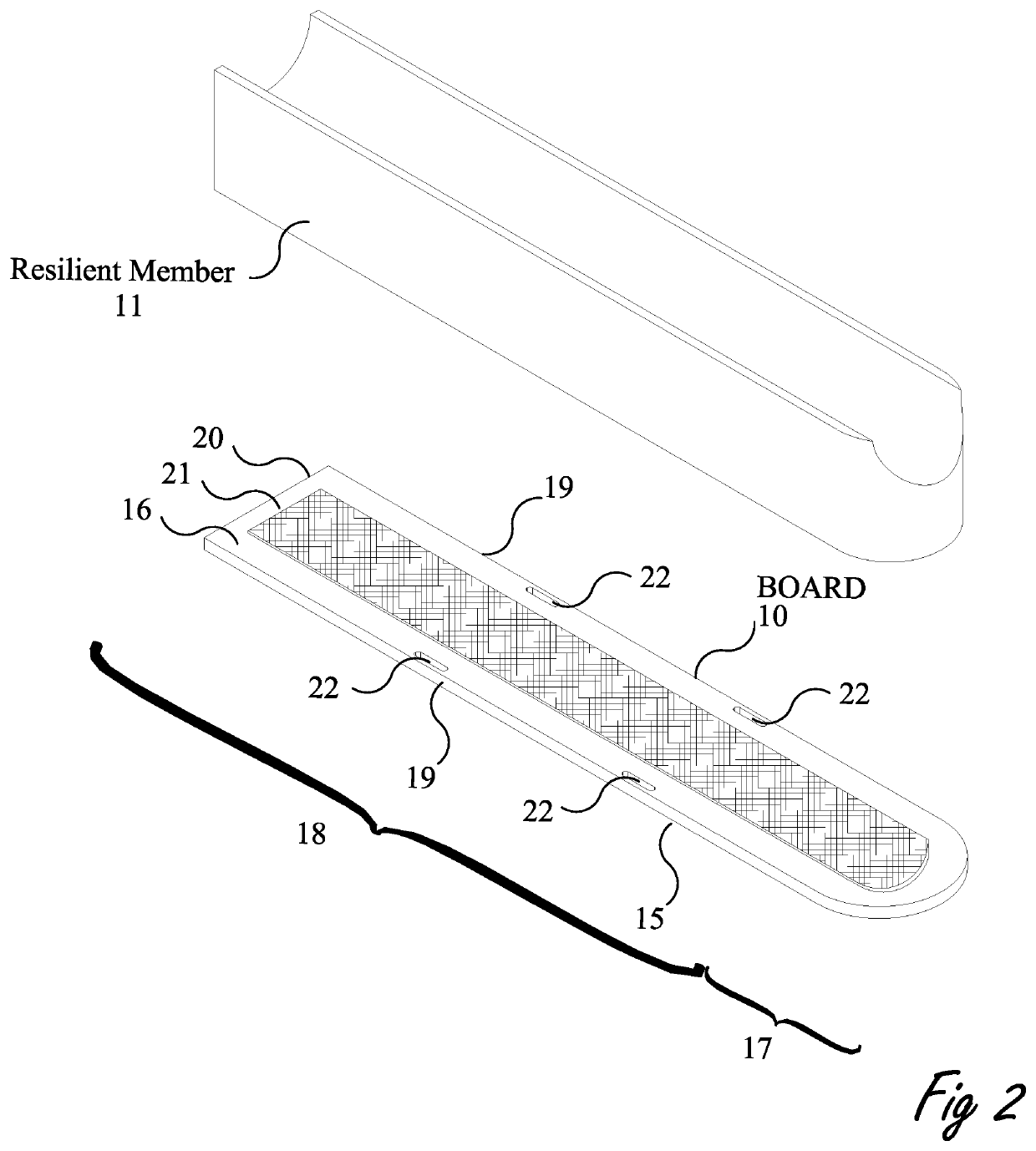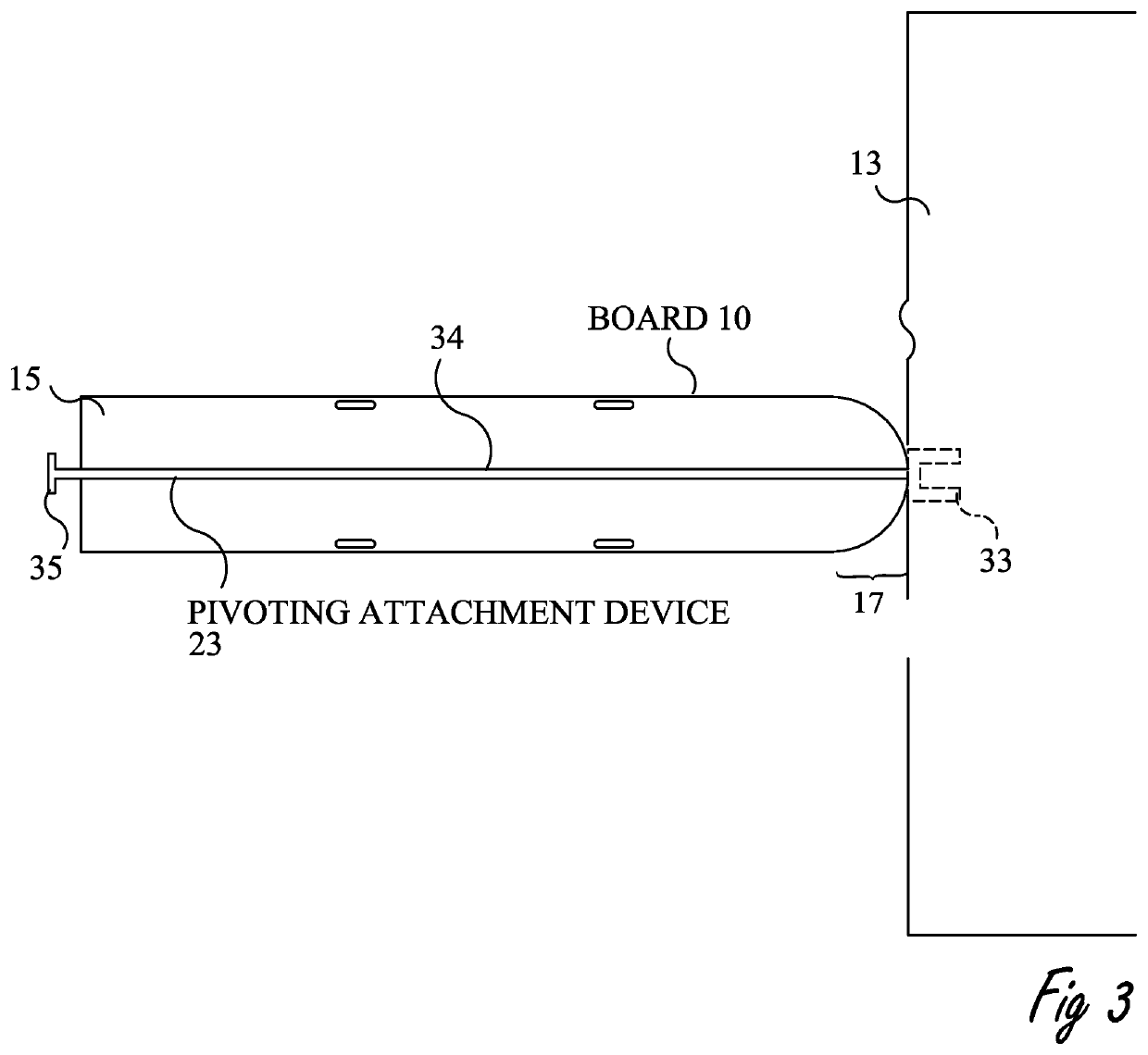Non-traumatic, non-occlusive extremity support system
a support system and non-occlusive technology, applied in the field of non-traumatic, non-occlusive extremity support system, can solve the problems of limiting access to the extremity, increasing the pressure of the extremity, and affecting the function of a multitude of medical devices
- Summary
- Abstract
- Description
- Claims
- Application Information
AI Technical Summary
Benefits of technology
Problems solved by technology
Method used
Image
Examples
first embodiment
[0098]One embodiment of an extremity support system comprises (FIG. 1) a board 10 and a resilient member 11 for supporting a patient's extremity 12 off a table 13 having a top cushion 14. Board 10 is pivotally attached to a side or end of table 13 by a known pivoting attachment component 33 which is described in connection with FIG. 3. Openings 22 in board 10 hold straps 31, which are described in connection with FIGS. 11 and 12 so that straps 31 can span over resilient member 11 without touching extremity 12.
Description—First Embodiment—FIGS. 2-8
[0099]As shown in FIG. 2, board 10 is constructed of hard rigid material(s) for supporting resilient member 11. Board 10 has an undersurface 15 that is flat, an upper surface 16 that is flat, a curved portion 17 that is semicircular in shape, a platform portion 18 that is rectangular in shape and has a pair of opposite sides 19, and an outer end 20. Upper surface 16 has a longitudinal band of one component 21 of a hook-and-loop fastener and...
PUM
 Login to View More
Login to View More Abstract
Description
Claims
Application Information
 Login to View More
Login to View More - R&D
- Intellectual Property
- Life Sciences
- Materials
- Tech Scout
- Unparalleled Data Quality
- Higher Quality Content
- 60% Fewer Hallucinations
Browse by: Latest US Patents, China's latest patents, Technical Efficacy Thesaurus, Application Domain, Technology Topic, Popular Technical Reports.
© 2025 PatSnap. All rights reserved.Legal|Privacy policy|Modern Slavery Act Transparency Statement|Sitemap|About US| Contact US: help@patsnap.com



